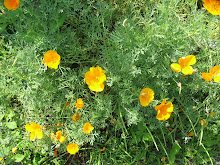That question piqued my interest in the effects of global warming on gardens. In her Sustainable Gardening Blog last year, Susan Harris provided a formidable list that included increased rainfall and pollen production, as well as an increase in weedy and noxious plants (such as poison ivy), heat stress to tomatoes and other warm-season crops, and difficulties of growing lilacs, rhododendrons, and some trees.
The National Arbor Day Foundation's web site features an animation showing the boundaries of the hardiness zones moving northward between 1990 and 2006, due to the increase in temperatures. These little changes we've been noticing over the years, whether it's more rain or diminished success growing a once-reliable staple, may be linked to something larger and more disturbing.


No comments:
Post a Comment